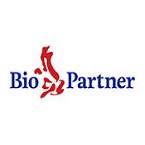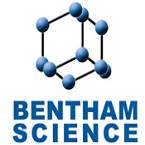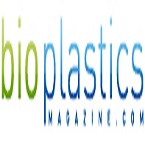Session and tracks
Track 1 : Nanomaterials Synthesis and Characterization
Nanomaterials Synthesis and Characterization is a cornerstone of nanoscience and nanotechnology, focusing on the production and detailed analysis of materials at the nanometer scale. This field encompasses a wide range of techniques and methodologies for creating nanoparticles, nanorods, nanotubes, and other nanoscale structures. These nanomaterials possess unique physical, chemical, and biological properties that differ markedly from bulk materials, enabling groundbreaking applications in various industries, including medicine, electronics, energy, and environmental science. Methods such as chemical vapor deposition, sol-gel processes, electrochemical deposition, and ball milling are employed to create nanomaterials with controlled size, shape, and composition. Advanced tools and techniques like transmission electron microscopy (TEM), scanning electron microscopy (SEM), atomic force microscopy (AFM), X-ray diffraction (XRD), and spectroscopy methods (e.g., Raman, UV-Vis) are used to analyze the structural, optical, and electronic properties of nanomaterials. Understanding the unique properties of nanomaterials, such as quantum effects, surface area-to-volume ratio, and mechanical strength, is crucial for their application in drug delivery systems, renewable energy technologies, electronic devices, and environmental remediation.
Track 2 : Nanoelectronics and Nanophotonics
Nanoelectronics involves the use of nanotechnology in electronic components. These components are usually only a few nanometers in size, enabling faster, smaller, and more efficient devices than those achievable with traditional semiconductor technologies. Nanoelectronics includes the study and development of devices like transistors, memory chips, and integrated circuits on the nanoscale.Development of nanoscale transistors that offer higher performance and lower power consumption. Utilization of quantum dots for applications in quantum computing and advanced semiconductor devices. Exploration of single molecules or small groups of molecules as electronic components, such as diodes or transistors. Exploitation of electron spins in addition to charge in electronic devices, potentially leading to devices with increased data storage and faster processing speeds. Nanophotonics is the study of the behavior of light on the nanometer scale, and of the interaction of nanometer-scale objects with light. It merges the principles of optics and nanotechnology to develop devices that can manipulate light with unprecedented precision. Utilizing surface plasmons (waves of electrons on a metal surface) to focus and guide light beyond the diffraction limit of conventional optics. By advancing nanoelectronics and nanophotonics, researchers aim to revolutionize the fields of computing, telecommunications, medical diagnostics, and energy systems, pushing the boundaries of what is technologically possible.
Track 3 : Nanomedicine and Drug Delivery
Nano medicine leverages nanotechnology for the prevention, diagnosis, and treatment of diseases. By manipulating materials at the nanoscale (typically less than 100 nanometers), scientists can create new therapies and diagnostic tools that offer unprecedented precision and effectiveness. Utilizing nanoparticles to deliver drugs directly to diseased cells, thereby reducing side effects and improving efficacy. Enhancing imaging techniques such as MRI, CT scans, and ultrasounds with nanoparticles to achieve higher resolution and better disease detection. Developing nanoparticles that can deliver therapeutic agents like genes, proteins, or small molecules to specific cells or tissues. Creating nanoscale sensors for early disease detection and monitoring biological processes in real-time. Nanotechnology has significantly advanced drug delivery systems by developing nanoscale carriers that can transport therapeutic agents to specific sites in the body, improving the effectiveness and safety of treatments. These include liposomes, dendrimers, polymeric nanoparticles, and inorganic nanoparticles, each offering unique properties for drug encapsulation and release. Designing nanoparticles that can release drugs in a controlled manner over time, enhancing the therapeutic effect and minimizing side effects. By advancing Nano medicine and drug delivery technologies, researchers aim to develop more effective, safer, and personalized medical treatments, ultimately improving patient outcomes and quality of life.
Track 4 : Nanobiotechnology and Bionanotechnology
Nanobiotechnology is the intersection of nanotechnology and biology, where nanoscale tools and techniques are applied to biological systems. This field leverages the unique properties of nanomaterials to create new solutions for biological and medical challenges. Using nanoparticles, nanowires, and nanotubes to study and manipulate biological systems at the molecular level. Developing nanoscale sensors for detecting biological molecules, pathogens, and environmental contaminants with high sensitivity and specificity. Creating nanocarriers that can deliver therapeutic agents directly to targeted cells or tissues, improving treatment efficacy and reducing side effects. Utilizing nanomaterials to create scaffolds that support the growth and differentiation of cells, aiding in tissue repair and regeneration. Bionanotechnology is a branch of nanotechnology that involves the use of biological molecules, such as proteins, DNA, and lipids, to create nanoscale devices and systems. It merges principles from biology, chemistry, and physics to develop innovative solutions for medical, industrial, and environmental applications. Harnessing the natural self-assembly properties of biological molecules to create complex nanostructures and materials. By advancing the fields of nanobiotechnology and bionanotechnology, researchers are pushing the boundaries of what is possible in medicine, industry, and environmental science, leading to breakthroughs that have the potential to transform our world.
Track 5 : Nano composites and Multifunctional Materials
Nanocomposites are materials that combine nanoparticles with bulk materials to create new materials with enhanced properties. These composites leverage the unique characteristics of nanoparticles—such as their high surface area, mechanical strength, and electrical conductivity—to improve the performance of the base material. Typically consist of a matrix material (polymer, metal, or ceramic) and nanofillers (nanotubes, nanofibers, nanoparticles, or nanoclays). Methods such as melt blending, solvent casting, in-situ polymerization, and electrospinning are used to incorporate nanoparticles into the matrix. Multifunctional materials are engineered to perform multiple functions simultaneously, such as structural support, sensing, actuation, energy storage, and thermal management. By integrating several functions into a single material, these advanced materials can lead to more efficient and compact systems. Techniques like layer-by-layer assembly, additive manufacturing, and hybridization are used to create multifunctional materials. Capable of repairing damage autonomously, extending the material's lifespan. Significantly improved properties over conventional materials, leading to better performance and longer life spans. By advancing the development of nanocomposites and multifunctional materials, researchers are creating materials that not only meet but exceed the demands of modern applications. These materials offer significant advantages in terms of performance, efficiency, and functionality, paving the way for groundbreaking innovations across various fields.
Track 6 : Nanotechnology in Energy and Environment
Nanotechnology plays a crucial role in enhancing the efficiency, performance, and sustainability of energy systems. By manipulating materials at the nanoscale, researchers can develop advanced materials and technologies that address the critical challenges in energy production, storage, and conservation. Nanomaterials, such as quantum dots and perovskites, improve the efficiency of solar cells by enhancing light absorption and reducing energy losses. Nano catalysts are used to convert solar energy into chemical fuels, such as hydrogen, through processes like water splitting. Nanomaterials are used to develop highly efficient insulation materials that reduce energy consumption in buildings. Nanotechnology offers innovative solutions for environmental challenges by providing new methods for pollution control, waste management, and resource conservation. Nanoscale materials and technologies can detect, prevent, and remediate environmental pollution more effectively than conventional methods. Nanomaterials, such as graphene oxide and carbon nanotubes, enhance the removal of contaminants from water through filtration and adsorption processes. Nanomembranes improve the efficiency and cost-effectiveness of desalination technologies for producing fresh water from seawater. Nanotechnology is revolutionizing the energy and environmental sectors by providing advanced materials and technologies that are more efficient, cost-effective, and environmentally friendly. These innovations hold the promise of a more sustainable and cleaner future, addressing some of the most pressing issues facing the world today.
Track 7 : Nanotechnology in Agriculture and Food
Nanotechnology offers innovative solutions to enhance agricultural practices and improve food production, processing, and safety. By manipulating materials at the nanoscale, researchers and farmers can develop novel strategies to address challenges such as crop diseases, nutrient management, and food contamination. Nanoparticles deliver nutrients, pesticides, and herbicides directly to plants, reducing waste and environmental impact. Nanosensors monitor soil moisture, nutrient levels, and plant health, enabling precise management of agricultural inputs. Nanoparticles enhance the efficacy of pesticides, reducing the amount needed and minimizing environmental contamination. Used in crop protection and food packaging to inhibit microbial growth and extend shelf life. Improve nutrient uptake by plants, reduce leaching, and enhance soil fertility. Nanoparticles can improve water retention in soil, reducing water usage in agriculture. Nanotechnology enables targeted delivery of inputs, reducing waste and improving resource use efficiency. Enhances food safety by reducing contamination risks and improving detection methods for pathogens and toxins. Nanotechnology holds great promise for revolutionizing agriculture and food systems, offering innovative solutions to improve sustainability, productivity, and food security. Continued research and development in this field will lead to further advancements, benefiting farmers, consumers, and the environment.
Track 8 : Computational nanotechnology
Computational nanotechnology refers to the use of computer simulations and modelling techniques to understand and predict the behaviour of Nano scale materials and devices. It plays a crucial role in designing and optimizing Nano scale structures and systems, enabling researchers to explore new possibilities in nanotechnology. Computational methods are used to simulate the behaviour of molecules and atoms, providing insights into their interactions and properties. Computer simulations help in designing novel nanomaterials with specific properties by manipulating their structure, composition, and arrangement. Computational approaches are used to study biological systems at the nanoscale, leading to advancements in drug delivery, imaging, and diagnostics. Simulation techniques are applied to design nanoscale electronic devices, such as transistors and memory devices, for improved performance and efficiency. By simulating the behavior of nanoparticles in the environment, computational tools help assess their potential impact and develop mitigation strategies. Computational modeling helps in designing energy-efficient nanodevices and materials, contributing to sustainable energy solutions. Computational nanotechnology is a rapidly evolving field that bridges the gap between theory and experimentation, enabling researchers to explore and exploit the unique properties of nanoscale materials and devices. Continued advancements in computational techniques will further enhance our understanding of nanotechnology and its applications in various domains.
Track 9 : Nanofabrication and Nanoengineering
Nanofabrication and Nano engineering refer to the processes and techniques used to create structures, devices, and systems at the Nano scale. These technologies are essential for developing a wide range of applications in electronics, medicine, energy, and materials science. A technique used to pattern surfaces with light, enabling the creation of Nano scale features on semiconductor substrates. Deposition of thin films onto a substrate by chemical reactions, used to create coatings and nanostructures. A method for creating patterns on a substrate using a focused beam of electrons, enabling high-resolution Nano patterning. The spontaneous organization of molecules or nanoparticles into ordered structures, used to create nanoscale patterns and materials. Nanofabrication enables the development of smaller, faster, and more efficient electronic devices, such as transistors, sensors, and memory chips. Nanofabrication is used to create nanocomposites and nanomaterials with unique mechanical, electrical, and chemical properties for various applications. Nanofabrication and nanoengineering are driving innovations across multiple industries, enabling the development of advanced technologies with unprecedented performance and functionality at the nanoscale. Continued advancements in these fields hold the promise of even more groundbreaking applications in the future
Track 10 : Nanotechnology in textiles
Nanotechnology in textiles refers to the application of nanomaterials and nanotechnology techniques to enhance the functionality and performance of fabrics. By incorporating nanoparticles or nanofibers into textiles, manufacturers can impart a range of properties that improve comfort, durability, and functionality. Nano coatings can be applied to textiles to make them water and stain resistant without affecting breathability. Nanoparticles can enhance the thermal properties of textiles, keeping the wearer cool in hot conditions and warm in cold conditions. Nanofibers and coatings can improve the moisture-wicking properties of textiles, keeping the wearer dry and comfortable. Nanotechnology enables the creation of conductive textiles for use in wearable electronics and sensors. Nanoparticles can increase the durability of textiles, making them more resistant to wear and tear. Nanotechnology is revolutionizing the textile industry, offering new possibilities for innovative and high-performance fabrics. As research in this field continues, we can expect to see even more advanced and sustainable textile solutions in the future. Nanoparticles can provide UV protection, shielding the skin from harmful UV rays. Nanofibers and coatings can improve the moisture-wicking properties of textiles, keeping the wearer dry and comfortable. Nanotechnology enhances the performance of textiles, making them more durable, comfortable, and functional.
Track 11 : Nanotechnology for Electronics and Photonics
Nanotechnology has transformed the fields of electronics and photonics by enabling the development of smaller, faster, and more efficient devices. By manipulating materials at the nanoscale, researchers and engineers have been able to create novel materials and structures with unique properties that are not achievable at larger scales. Nanotechnology has led to the development of nanoscale electronic components, such as transistors and memory devices that are faster, more energy-efficient, and smaller than conventional counterparts. Quantum dots are nanoscale semiconductor particles that exhibit quantum mechanical properties. They are used in displays, lighting, and medical imaging applications due to their unique optical properties. Nanotechnology has enabled the development of nanoscale optical components and devices, such as waveguides and sensors that can manipulate light at the nanoscale. Plasmonics involves the interaction of light with metal nanostructures. It is used in applications such as biosensing, optical communication, and photovoltaics. Nanotechnology has led to the development of nanomaterials for use in batteries and supercapacitors, offering higher energy density and faster charging times. Nanotechnology enables the miniaturization of electronic and photonic devices, leading to smaller and more portable devices. Nanomaterials and structures exhibit unique properties, such as higher conductivity or better light absorption, that improve the performance of electronic and photonic devices. Nanotechnology enables the development of energy-efficient devices, reducing power consumption and extending battery life.
Track 12 : Nanoethics and Regulatory Issues
Nanoethics are the ethical and societal implications of nanotechnology, including the ethical considerations of research, development, and application of nanomaterials and devices. It encompasses issues such as privacy, security, environmental impact, and the potential risks and benefits of nanotechnology.Regulatory issues related to nanotechnology include the need for new regulations or amendments to existing regulations to ensure the safe development and use of nanomaterials. This includes regulations regarding the labelling of nanoproducts, safety assessments, and risk management strategies. Ensuring the safety of nanomaterials for human health and the environment is a primary concern. This includes assessing the potential risks of exposure to nanomaterials and implementing safety measures to mitigate these risks. Nanotechnology has the potential to impact the environment in various ways, such as through the release of nanomaterials into the environment or changes in ecosystem dynamics. It is important to assess and mitigate these potential impacts. Nanotechnology can be used in surveillance and monitoring technologies, raising concerns about privacy and security. It is important to address these concerns through appropriate regulations and ethical guidelines. There is a need to ensure that the benefits of nanotechnology are equitably distributed and that access to nanotechnology is not limited by socioeconomic factors. The complex nature of nanotechnology and its potential impacts make it challenging to fully understand and address ethical and regulatory issues. Public perception of nanotechnology can influence regulatory decisions and ethical considerations. It is important to engage with the public and address concerns through education and outreach.
Track 13 : Advanced nanomaterials
Advanced nanomaterials refer to nanoscale materials that exhibit unique properties and functionalities due to their small size and high surface area-to-volume ratio. These materials are engineered at the nanoscale to achieve specific properties for various applications. Nanomaterials often exhibit superior mechanical properties such as strength, hardness, and flexibility compared to their bulk counterparts. Some nanomaterials, like carbon nanotubes and graphene, exhibit excellent electrical conductivity, making them suitable for use in electronics and energy storage devices. The high surface area-to-volume ratio of nanomaterials results in increased chemical reactivity, enabling applications in catalysis and sensors. Nanomaterials can exhibit unique optical properties, including enhanced light absorption and emission, which are useful in imaging, sensing, and display technologies. Many nanomaterials are biocompatible and can be used in biomedical applications such as drug delivery, imaging, and tissue engineering. Nanomaterials are used in batteries, super capacitors, and fuel cells to improve energy storage and conversion efficiency. There are concerns about the potential toxicity of some nanomaterials, which requires careful evaluation and regulation. Scaling up the production of nanomaterials while maintaining their desired properties can be challenging. There is a need for regulations to ensure the safe use of nanomaterials and address ethical concerns. Overall, advanced nanomaterials have the potential to revolutionize various industries and technologies, but their safe and responsible use requires careful consideration of their properties, applications, and potential risks
Track 14 : Nanotechnology in Biomedical Applications
Nanotechnology has revolutionized biomedical applications by offering innovative solutions in drug delivery, diagnostics, imaging, and regenerative medicine. Nanoparticles can be engineered to encapsulate drugs, protecting them from degradation and allowing for targeted delivery to specific cells or tissues. This enhances drug efficacy and reduces side effects. Nanotechnology has enabled the development of highly sensitive diagnostic tools. Nanoparticles can be functionalized with biomolecules to detect specific targets like proteins or nucleic acids, aiding in early disease detection. Nanoparticles can act as contrast agents in imaging techniques such as MRI, CT scans, and fluorescence imaging. They enhance the visibility of tissues and organs, providing more accurate diagnostic information. Nanomaterials are used to create scaffolds that mimic the extracellular matrix, promoting tissue regeneration. They can also be used to deliver growth factors or stem cells to repair damaged tissues. Nanoparticles can deliver anticancer drugs directly to tumor cells, reducing systemic toxicity. They can also be used in photothermal and photodynamic therapies to selectively destroy cancer cells. Nanomaterials are used in dressings and bandages to promote wound healing. They can control the release of growth factors and antimicrobial agents, reducing the risk of infection. Challenges in nanomedicine include safety concerns regarding nanoparticle toxicity, regulatory issues, and the need for scalable manufacturing processes. Despite these challenges, nanotechnology continues to drive advancements in biomedical research and offers promising solutions for improved healthcare.
Track 15 : Nanotechnology in Cosmetics
Nanotechnology has made significant advancements in the field of cosmetics, offering innovative solutions for improved product performance and enhanced consumer experience. Nanoparticles, particularly zinc oxide and titanium dioxide, are used in sunscreens to provide broad-spectrum UV protection. These nanoparticles are transparent and offer better coverage than traditional sunscreens, which can leave a white residue on the skin. Nanotechnology is used to deliver active ingredients, such as retinol and peptides, deeper into the skin for better efficacy. Nanocarriers can protect these ingredients from degradation and enhance their penetration into the skin. Nanoparticles are used in moisturizers, creams, and lotions to improve their texture and stability. Nanocarriers can also deliver vitamins, antioxidants, and other beneficial ingredients to target specific skin concerns. Nanoparticles are used in hair care products to improve their performance. Nanocarriers can deliver nutrients and conditioning agents to the hair shaft, making the hair smoother and more manageable. Nanoparticles are used in makeup products, such as foundations and lipsticks, to improve their texture and appearance. Nanoparticles can also provide better color dispersion and longer-lasting wear. Nanotechnology is used to encapsulate fragrance molecules, allowing for controlled release over time. This technology can help fragrances last longer on the skin.
Track 16 : Innovations in Nanotechnology
Nanotechnology has seen numerous innovations across various fields, leading to significant advancements in science, medicine, electronics, and materials science. Nanoparticles are used to deliver drugs to specific targets in the body, reducing side effects and improving efficacy. Liposomal drug delivery systems and polymer-based nanoparticles are examples of such innovations. Nanotechnology has revolutionized electronics, leading to smaller and more efficient devices. Innovations include nanoscale transistors, memory devices, and sensors, which have enabled the development of faster and more powerful electronics. Nanotechnology has transformed medicine with innovations such as targeted drug delivery, imaging agents, and regenerative medicine. Nanoparticles are used in cancer treatment, diagnostics, and tissue engineering. Nanomaterials have improved the performance of energy storage devices such as batteries and supercapacitors. Innovations include nanostructured electrodes and electrolytes, leading to longer-lasting and faster-charging batteries. Nanotechnology has been used to develop advanced water purification systems. Nanomaterials such as carbon nanotubes and graphene oxide are used to remove contaminants from water, making it safe for consumption. Nanotechnology has enabled the development of flexible and wearable electronics. Innovations include flexible displays, sensors, and energy harvesters, which have applications in healthcare, consumer electronics, and military technology. Nanotechnology has led to the development of novel materials with unique properties. For example, carbon nanotubes are known for their strength and conductivity, while nanocomposites exhibit superior mechanical and thermal properties. These innovations highlight the diverse applications of nanotechnology and its potential to address complex challenges in various fields. As research in nanotechnology continues to advance, we can expect to see even more groundbreaking innovations in the future.
Track 17 : Nanoscale Sensors and Diagnostics for Early Disease Detection
Nanoscale Sensors and Diagnostics for Early Disease Detection is an emerging and transformative area of research that holds immense promise for revolutionizing healthcare. This field focuses on the development of highly sensitive and specific nanoscale sensors and diagnostic platforms for the early detection of various diseases, including cancer, infectious diseases, and metabolic disorders. The conference on Nanoscale Sensors and Diagnostics gathers leading scientists, engineers, and medical professionals to share their latest research findings and innovations. Nanotechnology-based sensors offer unprecedented capabilities, enabling the detection of biomarkers and disease-related molecules at ultra-low concentrations. These nanosensors can facilitate point-of-care diagnostics, rapid screening, and real-time monitoring, paving the way for early interventions and personalized treatment approaches. Through this conference, participants collaborate to overcome challenges, such as sensor sensitivity, selectivity, and integration into clinical practice. By harnessing the power of nanotechnology, researchers aspire to bring about a paradigm shift in disease management, providing timely and precise diagnostic solutions to improve patient outcomes and public health.
Track 18: Nanotoxicology and Safety Assessment of Nanomedicine
Nanotoxicology and Safety Assessment of Nanomedicine is a pivotal area of research that addresses the potential risks and safety considerations associated with the use of nanomaterials in medicine. As nanomedicine gains momentum, understanding the interactions between nanomaterials and biological systems becomes imperative to ensure their safe and responsible development. This conference focuses on the latest advancements in nanotoxicology and safety assessment, aiming to elucidate the potential toxicity mechanisms, biocompatibility, and long-term effects of nanomedicine. Researchers and experts from diverse fields collaborate to develop robust safety evaluation strategies and predictive models for assessing the potential risks of nanomaterials. By comprehending the safety profile of nanomedicine, scientists can design and engineer nanocarriers and nanoparticles with improved biocompatibility and reduced adverse effects. This conference serves as a platform for knowledge exchange, critical discussions, and collaborative efforts to establish safe and effective guidelines for the clinical translation of nanomedicine, ensuring the delivery of safe and transformative nanotherapeutics to patients worldwide.























